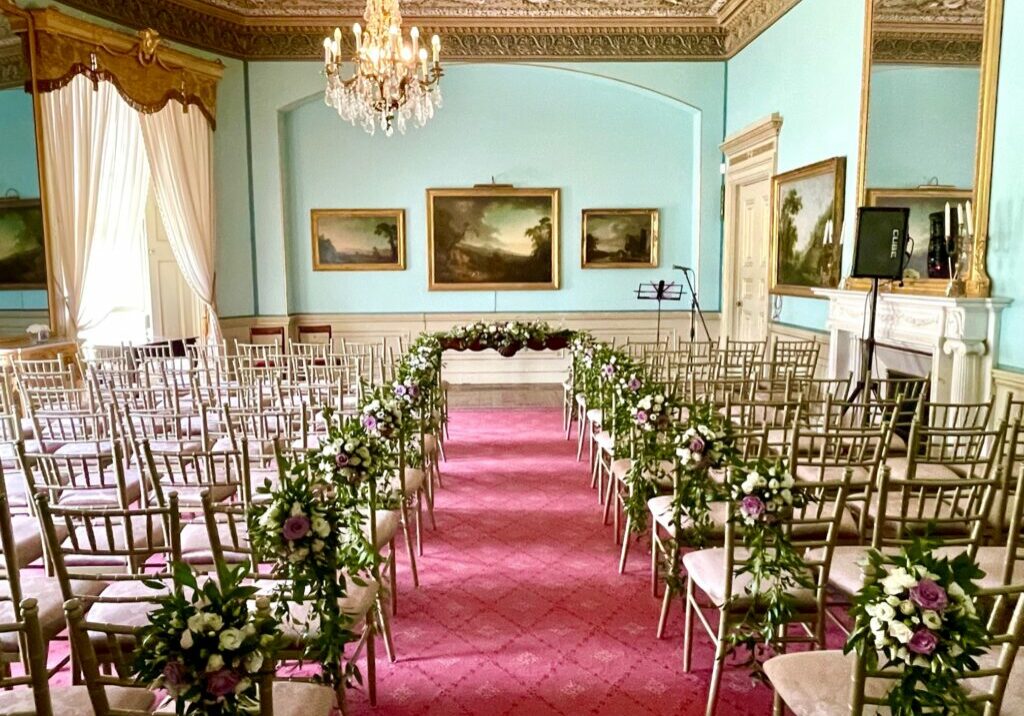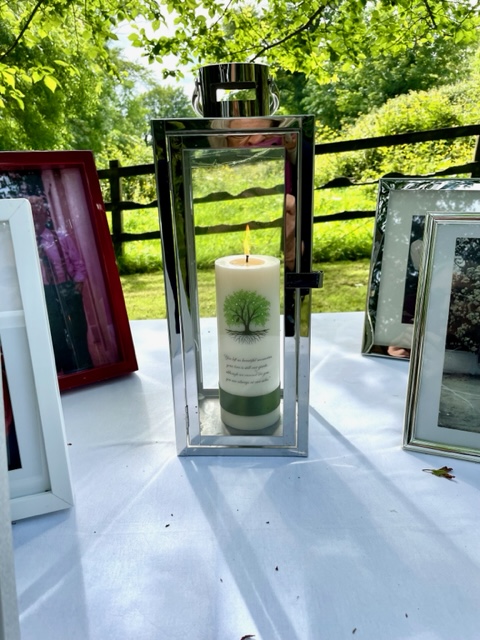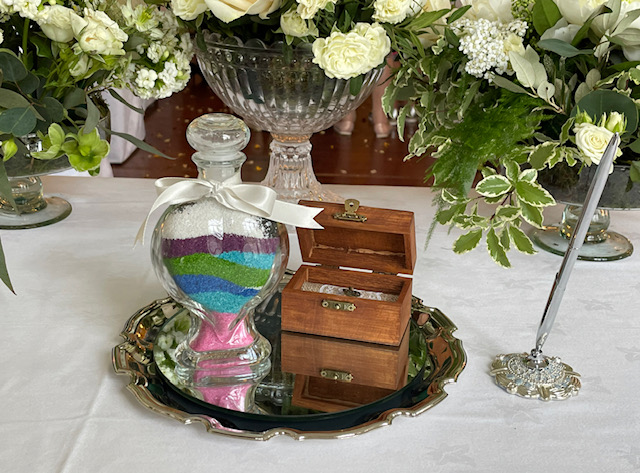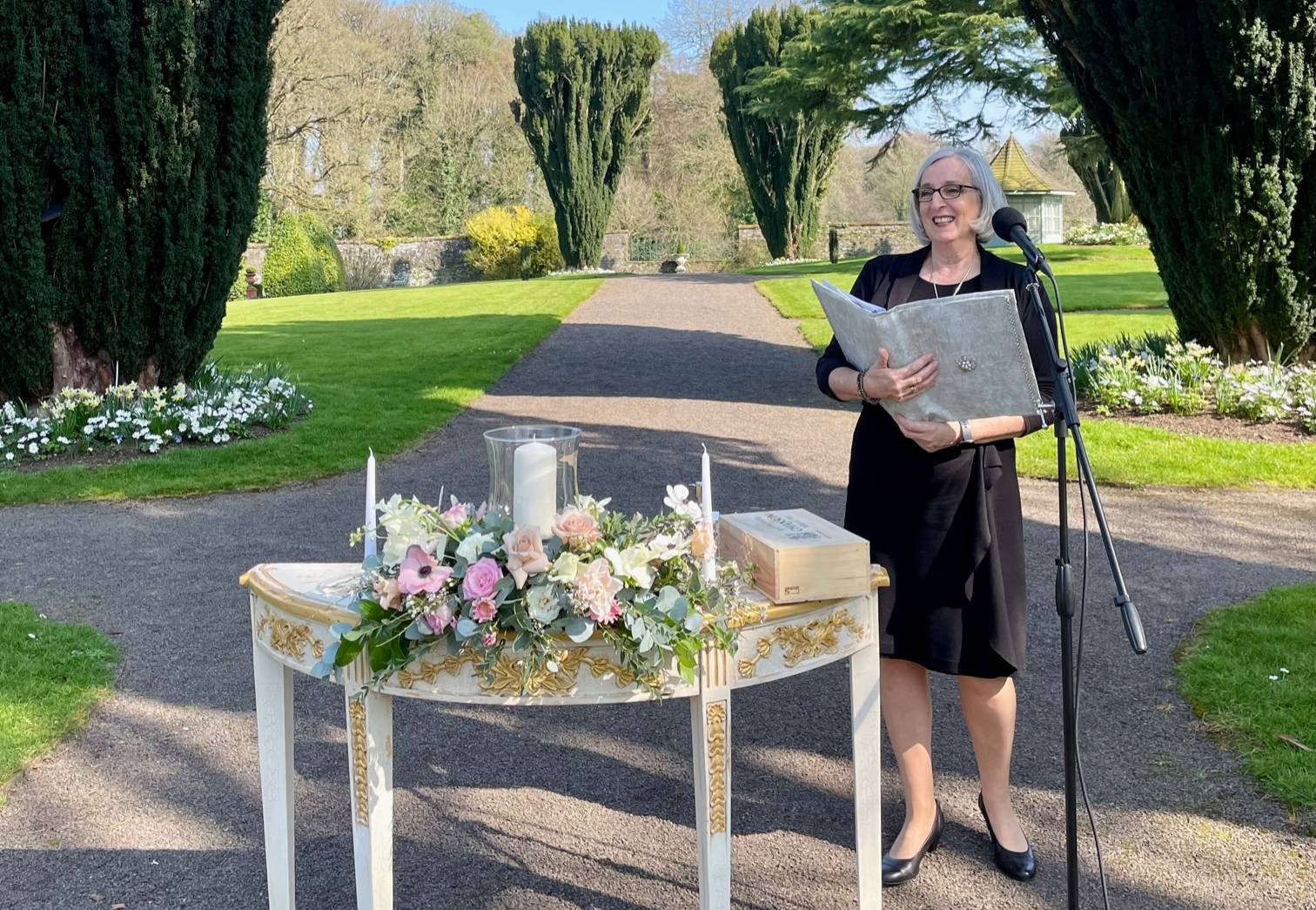How long is a wedding ceremony?

As a Celebrant in Ireland, I am frequently asked, "How long will my wedding ceremony be?"
If you are asking it's quite possible that you might have an idea of how long you would like your ceremony.
The answer is that it’s up to you, because the easy answer is, it’s as long as you want it to be
The real length of your wedding ceremony will be determined by what you would like to include.
If you are including children in your ceremony, you might want to think about them and how long would work for them, or alternatively, make arrangements for them to be looked after.
Depending on what is included, a lot of my ceremonies tend to be around the 35-to-40-minute duration.
There are many ways to personalise a ceremony, but the most popular are listed below:

Memorial Candle
This can be lit somewhere near the start of your ceremony and represents all of those that have been loved or lost. Especially, and here you can further personalise by detailing who no longer with us, their name and relationship to the couple. If you want to make more of an impact, you can have a moments silence and there are also various readings that might be read, depending on your individual circumstances. If you decide to get a special candle made, then this can be gifted as a memento after the ceremony.
Unity Ritual
You have the opportunity of including a unity ritual towards the start of your ceremony. The two popular choices are the Unity Candle ritual and also, the Unity Sand Blending ritual.
Unity Sand Blending Ritual
Unity Sand Blending Ritual
The Sand Blending ritual is something that a lot of families like to do. It usually takes place somewhere near the start of the ceremony and represents the uniting of the couple and also their two families.
In the example shown, ten smaller bottles of sand were poured into the glass bottle to create a unique and individual sand sculpture.
The colours can have meaning attributed to them, but usually couples just choose colours that they like. If children are to be involved, they can choose their own colours. This will mean that whenever they see the sand sculpture, they will be able to recognise their contribution to the sculpture.
Members from the couples' families can each pour a level of sand representing the foundation of the couple's lives and also the support of their family for their union.
Members from the families extended family can pour sand to represent the couples wider extended family and friends.
I've even had sand poured to represent the couple's fur baby (their dog!).
Once the sand has been poured and the final words said, one of the Groomsmen can display the sand for all the guests to see.


Unity Candle Ritual
We have probably all seen a Unity Candle ritual whilst at a traditional religious ceremony.
There are many more options in a Celebrant led ceremony. The symbolism is about the uniting of the couple and also their two families.
This ritual can be performed by the couple, on their own or family members can be involved.
The two outer candles represent the two families and where family members are involved, parents, or just one parent, take a flame from the candle representing their family and first the bride's family give the flame to the Bride. Then the other parents take the flame from the Groom's family candle and give the flame to the Groom.
Some final words are said and then the couple take their lighted candles to the unity candle and light it. Two flames becoming one.
Handfasting Ritual
Handfasting is a ritual that can be done in a number of different ways. It dates back to the times of the ancient Celts and is a tradition that is full of history.
In todays ceremonies, the handfasting ritual is used to symbolise a couple’s connection and devotion to one another.
The couple have a number of ways for personalization. They choose who will place the handfasting ribbons, what colour ribbons will be used. Each colour has meanings and the couple decide what meanings they use for each colour. They also get to choose the promise that is made when the ribbon is placed over the couples hands.
The couple can link hands in a number of different ways, but a lot of my couples like to use their left hands, these hands being the ones that have a direct link through to their hearts.
Where a couple has children, the children can come forward and tie the knot for the Bride & Groom, ie, Mum & Dad, or I can tie the knot instead if that's what the couple prefer.
An uplifting and very couple oriented wedding ritual with lots of history.

